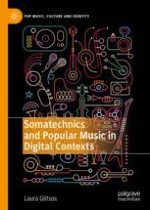2019 | OriginalPaper | Chapter
5. The ‘Creative Listener:’ Internet, Music, and the Computer-Bodymind Somatechnic
Author : Laura Glitsos
Published in: Somatechnics and Popular Music in Digital Contexts
Publisher: Springer International Publishing
Activate our intelligent search to find suitable subject content or patents.
Select sections of text to find matching patents with Artificial Intelligence. powered by
Select sections of text to find additional relevant content using AI-assisted search. powered by
